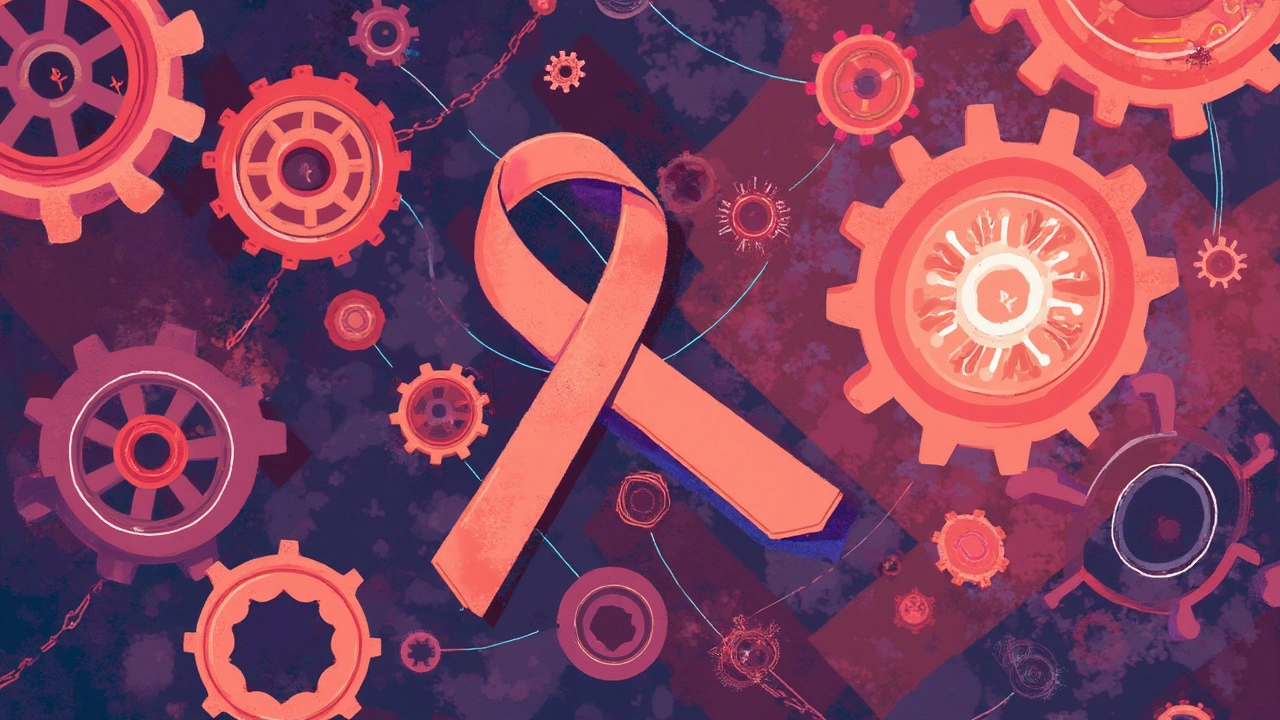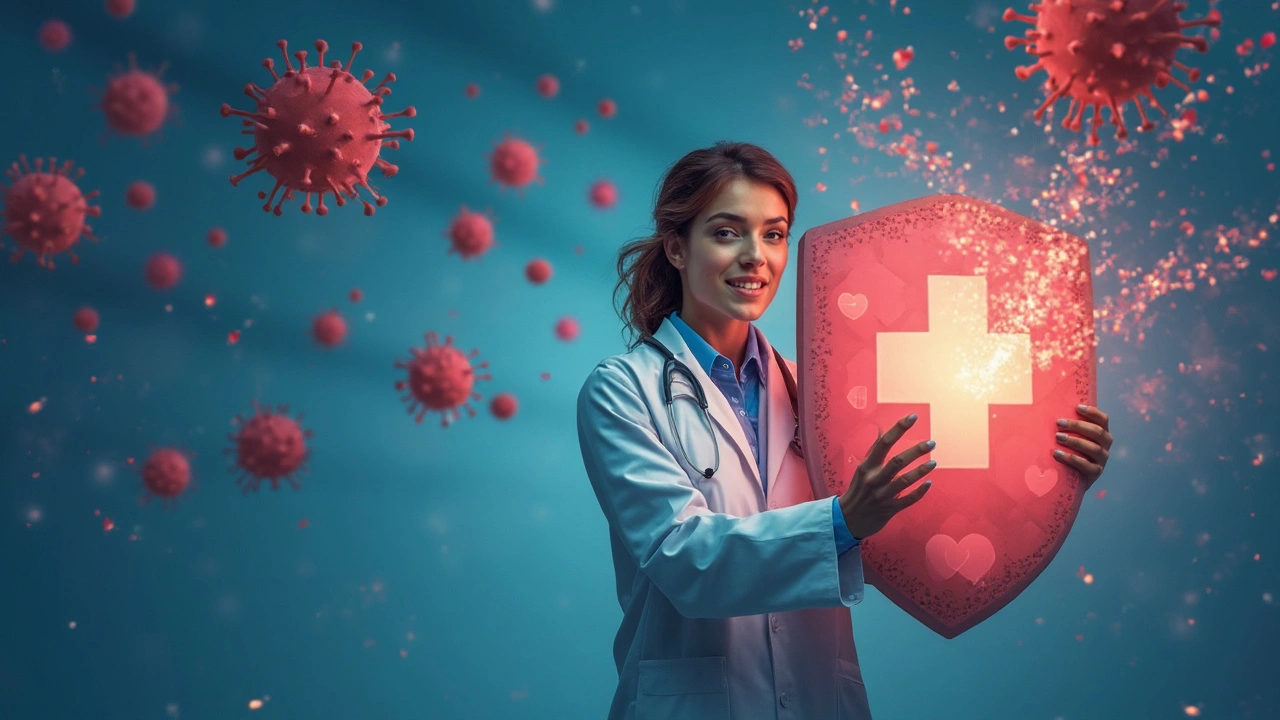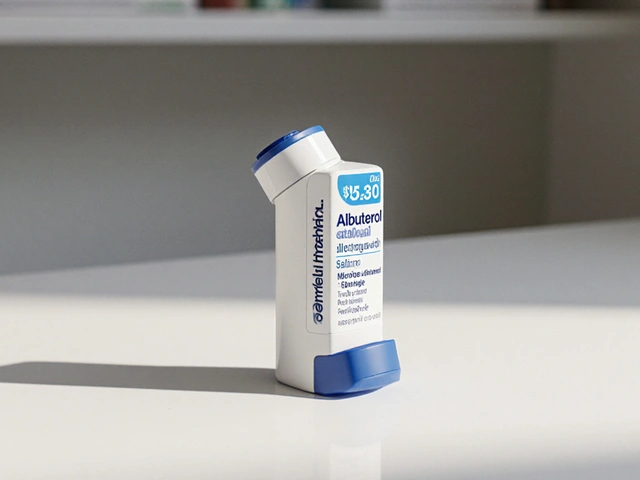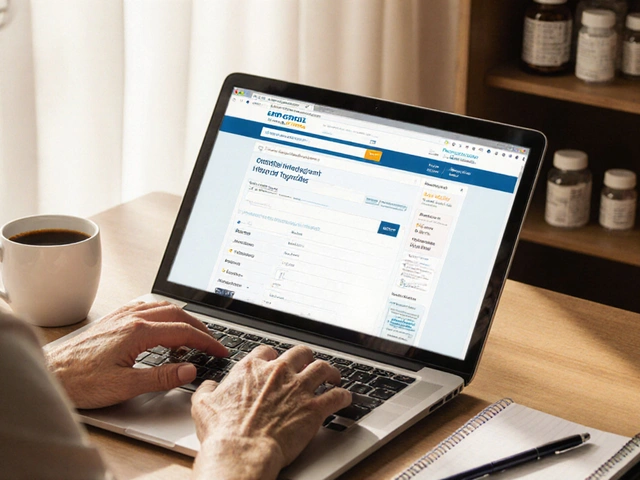
Did you know that while AIDS and other sexually transmitted infections (STIs) travel similar paths, their interaction forms a risky combination? Let's talk about how these conditions are connected and what that means for you.
AIDS isn't just another STI. It's more like the heavyweight champion whose presence makes the fight tougher. When a person has an STI, like gonorrhea or syphilis, it can mean that the door is wider open for HIV, the virus that causes AIDS, to enter the body. This means there's a double whammy: STIs can make it easier to catch HIV, and HIV can worsen existing STIs.
Pretty concerning, right? It's like when you leave a window open during a storm—more rainwater gets inside, and in this case, more viruses. And it's not just about catching HIV when you have an STI; if you already have HIV, STIs can worsen your health status. The body is under attack from multiple fronts, which can complicate treatment and lead to more severe health issues.
- AIDS and its Connection with STIs
- Shared Transmission Paths
- Increased Vulnerability: How STIs Affect HIV Infection
- Prevention and Protection Strategies
- Seeking Medical Advice and Testing
AIDS and its Connection with STIs
When we talk about AIDS and STIs, it's like talking about cousins at a family reunion—they're related and often seen together. Many STIs actually pave the way for HIV, the virus that leads to AIDS, making transmission more likely.
So, how does this happen? Well, certain STIs can cause sores or inflammation in your nether regions, which give HIV a smoother path to enter your body. This is because the virus has an easier time breaking through your body's defenses when there are open sores or inflammation.
Shared Transmission Routes
The paths these infections take to get into our systems are mostly the same. We're talking about unprotected sex, sharing needles, and that sort of thing. If one infection can get in through these routes, it's pretty likely another can too.
An interesting thing to note is how HIV and other STIs tend to coexist. According to data from many health studies, the co-infection rates of HIV and STIs are notably high. It's like one's presence boosts the other's ability to infect. In simple terms, having an STI can make someone more vulnerable to catching HIV.
STIs on HIV Progression
But it doesn't stop there. If someone has both HIV and another STI, it can worsen their health. STIs can make HIV progress faster, which means the virus affects the body more severely. It's a vicious cycle.
The blend of these infections can make treatments tricky too. It's not just about taking a pill and hoping for the best. Healthcare providers often need to tackle both infections, demanding more attention and care.
Bottom line? If you're looking to protect yourself or someone you care about, understanding these connections is crucial. Using protection, getting regularly tested, and seeking treatment promptly are some of the best lines of defense.
Shared Transmission Paths
Understanding how AIDS and other STIs spread is crucial if you want to stay protected. You've probably heard that both HIV and other STIs primarily pass from one person to another through direct contact with infected body fluids. But let's get a bit deeper into what that really means.
Sexual Activity: The most common way is through sexual activity. This includes vaginal, anal, and even oral sex. Engaging in any of these with an infected partner without protection significantly raises the risk of transmission. Condoms, while not 100% foolproof, do a pretty solid job at keeping most STIs, including HIV, at bay.
Blood Contact: Another shared path is through blood – think about sharing needles or getting tattooed with unsterilized equipment. This is a high-risk activity for both HIV and other blood-borne infections like hepatitis.
Mother to Child: Although less talked about, there's also the possibility of transmission from a mother to her baby during childbirth or breastfeeding. This affects both STIs and HIV, but thankfully, with medical advances, the risks here have reduced a lot when proper precautions and treatments are in place.
Reducing Risk
Knowing these paths gives you the power to make safer choices. Sticking with a single, tested, and trustworthy partner helps drop the odds significantly. Regular testing is also a good practice, especially if you're sexually active with multiple partners. It's quick, usually painless, and can save you a lot of stress down the road.
Education is key here. The more you know about how AIDS and other STIs transmit, the better you can protect yourself and those around you. Schools, community centers, and even online platforms offer resources to understand these risks better. Never shy away from learning.

Increased Vulnerability: How STIs Affect HIV Infection
The relationship between other STIs and HIV is a crucial piece of the puzzle if we're talking about increased vulnerability. When another STI is present, like herpes or chlamydia, the risk of acquiring HIV ramps up significantly. But why does this happen?
Damage and Inflammation
STIs often cause damage and inflammation in genital tissues. This damage creates more entry points for HIV, making it much easier for the virus to enter the bloodstream. Imagine your skin with tiny cuts, making it more susceptible to infections. That's kind of what's happening here.
Changes in the Immune System
Did you know that some STIs can also change the way immune cells behave? They can attract immune cells to the site of infection, which ironically makes it easier for HIV to target these cells and spread. It's a bit like a welcome party for a virus you don't want.
Herpes and HIV: A Risky Combination
Herpes is a particular concern because it causes recurring sores and ulcers, which are like open doorways for HIV. Plus, the immune response to herpes creates an ideal environment for HIV to do its thing.
| STI Type | Increased HIV Acquisition Risk |
|---|---|
| Genital Herpes | Multiple folds |
| Syphilis | 2 to 5 times |
| Gonorrhea | 2 to 3 times |
This table shows some common STIs and how much they can increase the risk of acquiring HIV. It's pretty eye-opening, isn't it?
Prevention Matters
So, knowing the increased vulnerability, it just reinforces the importance of being proactive in protection. Using condoms consistently and getting regular STI checks can really make a difference. It's not just about protecting against one virus; it's about a holistic approach to your health.
Prevention and Protection Strategies
Keeping yourself and others safe from AIDS and other sexually transmitted infections (STIs) isn't as daunting as it seems. With a few strategic steps, you can significantly reduce your risk.
Consistent Use of Protection
The easiest and most effective way to protect yourself is by using condoms. They're a frontline defense against both STIs and AIDS. Whether male or female condoms, their correct and consistent use plays a critical role in preventing transmission. So, stock up and make them a non-negotiable part of your routine.
Limit the Number of Partners
It might sound obvious, but having fewer sexual partners lowers the risk of getting STIs and AIDS. It's about reducing exposure and ensuring that you and your partners are on the same page regarding safety habits.
Regular Testing and Early Treatment
Getting tested regularly is vital. Early detection means early treatment, which can stop many STIs in their tracks and prevent complications. Testing for HIV and other STIs is quicker and more accessible than ever, with many clinics offering confidential and sometimes free testing. Make it part of your health routine.
The Role of Vaccinations
Did you know there are vaccines for some STIs? The HPV and hepatitis B vaccinations offer additional layers of protection. Talk to your doctor about these options, especially if you're in a higher risk category.
Open Communication
This might be the hardest step but talking openly with partners about your sexual health and history is just as important as any physical protection. It sets the stage for trust and responsibility, which are necessary for a healthy relationship.
Sometimes, stats help put things into perspective:
| Measure | Impact Reduction |
|---|---|
| Consistent Condom Use | Up to 80% |
| Regular Testing | Timely Treatment Initiation |
By incorporating these strategies, you're not just protecting yourself but also playing a part in reducing the spread of both STIs and AIDS in your community.

Seeking Medical Advice and Testing
Look, no one loves sitting in a doctor's office, but when it comes to sexually transmitted infections (STIs) and especially AIDS, it's crucial to keep tabs on your health. Regular check-ups are essential—consider it your safety net. But why is this so important?
If you suspect you might have been exposed to an STI or HIV, getting tested is your first step. Testing helps you catch any risks early, sometimes even before symptoms appear. Early detection means prompt treatment, keeping you healthier in the long run.
Why Testing Matters
Here’s a little-known fact: some STIs can hide without obvious symptoms, and that’s where testing becomes your ally. For HIV, knowing your status can significantly impact your health and others'. If you find out you're positive, treatments are available that can lower your risk of transmitting HIV to others.
Preparing for an Appointment
Before you step into that clinic, there are a few things you might want to do:
- Write down your symptoms, if any.
- List any medications you’re taking. It’s important for the doctor to see the whole picture.
- Jot down questions. Ever left a meeting and thought, "I wish I'd asked that"? Don’t let that happen here.
Understanding Test Results
After testing, understanding your results is key. If you're diagnosed with an STI, remember, knowledgeable healthcare providers can guide you through treating and managing it. For AIDS, medications known as antiretrovirals can help manage the virus effectively. The earlier you start, the better.
| Type of Test | Detection Window |
|---|---|
| HIV Antibody Test | 3-12 weeks after exposure |
| Gonorrhea and Chlamydia Test | 1-5 days after exposure |
So, make it a priority to get tested regularly if you're sexually active. It’s a straightforward step, but it can have a huge impact on your health and peace of mind. And remember, there’s no shame in taking control of your health—just smart living.





Comments (8)
Gina Banh
Let’s be real-STIs are the ultimate gatecrashers. They don’t just show up, they kick down the door, invite HIV in for cocktails, and then laugh while your immune system cries in the corner. Condoms aren’t optional. They’re your last line of defense. Skip them, and you’re basically volunteering for a biological war you didn’t sign up for.
And don’t even get me started on the ‘I feel fine’ crowd. If you’re not getting tested, you’re not being responsible-you’re being reckless.
Stop romanticizing risk. It’s not edgy. It’s deadly.
Deirdre Wilson
It’s wild how your body’s like a house and STIs are the broken windows. One crack, and everything leaks in-HIV, herpes, you name it. I used to think ‘it won’t happen to me’ until my cousin got syphilis and didn’t even know it for a year. No symptoms. Just… poof. Your immune system gets tired of cleaning up messes.
Now I carry condoms like gum. Always. And I test every 6 months. It’s not scary-it’s just part of being alive in 2024.
Damon Stangherlin
Really glad someone put this out there. So many people don’t realize how linked these infections are. I’ve seen friends ignore chlamydia because ‘it’s no big deal’-until they got HIV. The body doesn’t handle multiple infections well. It’s like trying to run a marathon with two broken legs.
Get tested. Talk to your partners. Use protection. It’s not complicated. Just… do it. 🙏
Ryan C
Correction: HIV doesn’t ‘cause’ AIDS. HIV is the virus. AIDS is the clinical syndrome that occurs when CD4+ T-cell count drops below 200 cells/mm³ or an AIDS-defining illness develops. Terminology matters. Also, the data on increased HIV acquisition with genital herpes is actually 2–3x, not ‘multiple folds.’ Your table is misleading. 🤓
Also, HPV vaccine prevents 90% of HPV-related cancers. Get it. Hep B too. And yes, PrEP is 99% effective for HIV prevention if taken correctly. Stop fearmongering. Start facts.
Dan Rua
Yeah, I’ve been on PrEP for two years now. Best decision I ever made. I still use condoms because I care about STIs too, but knowing I’m protected from HIV? Huge peace of mind.
And testing? I go every 3 months. It’s like an oil change for your body. Quick, painless, and keeps you running smoothly. Also, clinics are way less intimidating than people think. Just walk in. They’ve seen it all.
Thanks for writing this. Needed it.
Mqondisi Gumede
You people act like HIV is some magical death sentence like it's 1985. We got meds now. People on ART live longer than most. Why are you all so scared? Africa has more STIs and nobody is crying. You Americans turn everything into a horror movie. Get a life. Sex is natural. Fear is not. Testing is fine but don't make it a cult. People are dying from anxiety not HIV anymore
Douglas Fisher
…I just… I want to say… thank you… for writing this… with such clarity… and compassion…
…I’ve been scared to get tested for years… and reading this… made me feel… like it’s okay… to care… about myself…
…I’m scheduling my appointment tomorrow…
…thank you… really… thank you…
Albert Guasch
It is imperative to underscore the clinical and epidemiological significance of the bidirectional interplay between human immunodeficiency virus (HIV) and other sexually transmissible pathogens. The presence of mucosal ulcerations, inflammatory cytokine upregulation, and dendritic cell recruitment secondary to co-infection with pathogens such as Treponema pallidum or Herpes simplex virus-2 substantially augments the probability of viral entry and systemic dissemination.
Consequently, public health interventions must be predicated upon a multilayered framework encompassing barrier protection, pharmacological prophylaxis (e.g., PrEP), routine serological surveillance, and comprehensive sexual health education.
Furthermore, the integration of vaccination protocols for hepatitis B and human papillomavirus represents a paradigmatic advancement in preventive medicine. One must not underestimate the societal utility of non-judgmental, accessible, and confidential clinical services.
It is not merely prudent-it is a moral imperative-to prioritize one’s sexual health with the same rigor as one would cardiovascular or metabolic wellness.
Let us not conflate informality with ignorance. Knowledge is power-and power, in this context, is longevity.